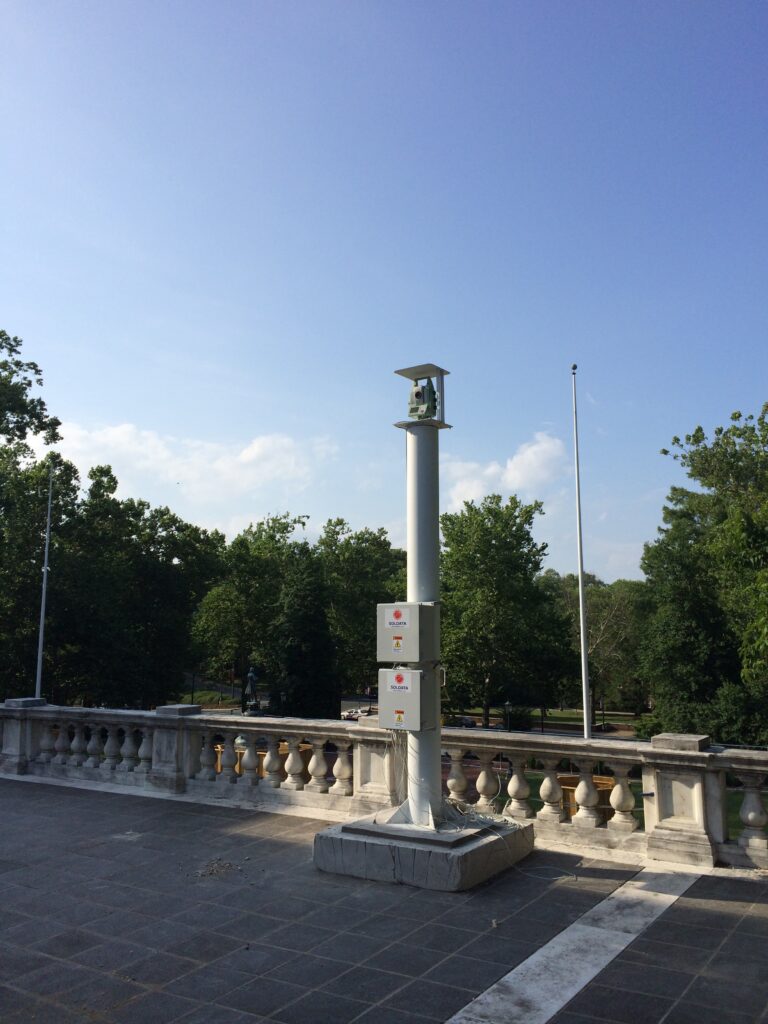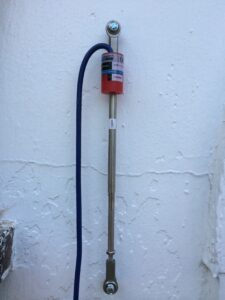University of Virginia Rotunda Rehabilitation
Project summary
Images of the project
UVA Rotunda Rehabilitation Project
In 2012, extensive construction work began to restore the Rotunda, a historical building known as the centerpiece of the University of Virginia (UVA). The structure, which is considered a pinnacle of American design, is one of three buildings in the United States recognized as a UNESCO World Heritage site.
Constructed in 1822 as a university library and designed by Thomas Jefferson, it is currently utilized as an events and exhibition space and also houses a few classrooms. The restoration work involved enhancing access to meet ADA requirements, cleaning, and fortifying the building, with the goal of keeping it to Jefferson’s original vision.
Sixense’s Monitoring Work
Since the Rotunda was constructed without modern foundation techniques, workers had to excavate using shovels and manual labor. They dug small pits, approximately 3 feet by 4 feet, underneath the building. After digging a pit, it was filled with concrete. In total, they dug nearly 100 pits to provide support for the massive structure topped by an impressive dome.
Sixense’s contract consisted of monitoring the Rotunda during the sensitive work of underpinning, shoring, and excavation. Due to the works occurring partly under the existing foundations, the monitoring system was a critical part of the operation. Near real time deformation and continuous vibration monitoring was performed to track the building health during the critical phases of the project. All the measurements were stored in the Geoscope monitoring system centralizing the data from the site which allowed:
- Real-time access to the measurements through a dedicated website
- Trigger alarms if measurement points crossed the various thresholds defined

Movement Monitoring
The movement monitoring was performed with Sixense’s Cyclops system. The measurements of the Rotunda and adjacent building movements were carried out with the Automatic Motorized Total Station (AMTS) type TM50 by Leica and a up to 75 survey prisms.
The measurements were performed in all three dimensions. A weather station measuring temperature, humidity, and barometric pressure was installed to correct the measurements for atmospheric conditions resulting in system accuracy below 0.04 inches.

Vibration & Crack Monitoring
The vibration monitoring was performed with seven devices MR3000c from SYSCOM Instruments SA. The devices continuously recorded Peak Particle Velocity (PPV) at each location using a high accuracy triaxial sensor.
The crack monitoring was performed with ten crack gages with a model 4420 from GEOKON. The sensors installed had a 0.5-inch range adapted to measure the small crack evolution at key locations.


University of Virginia Rotunda Rehabilitation Project Takeaways
This restoration project was challenging due to its scale, size, and historical significance. Despite this, no major issues occurred during the work.
Whenever there was even a slight movement of the Rotunda structure, the contractors were alerted through Sixense’s state-of-the-art monitoring system. This enabled the crews to instantly address any issues in stabilizing the building.
The University of Virginia Rotunda Rehabilitation Project was completed in 2016, and the building is now more robust and safer for future generations of students and teachers.
